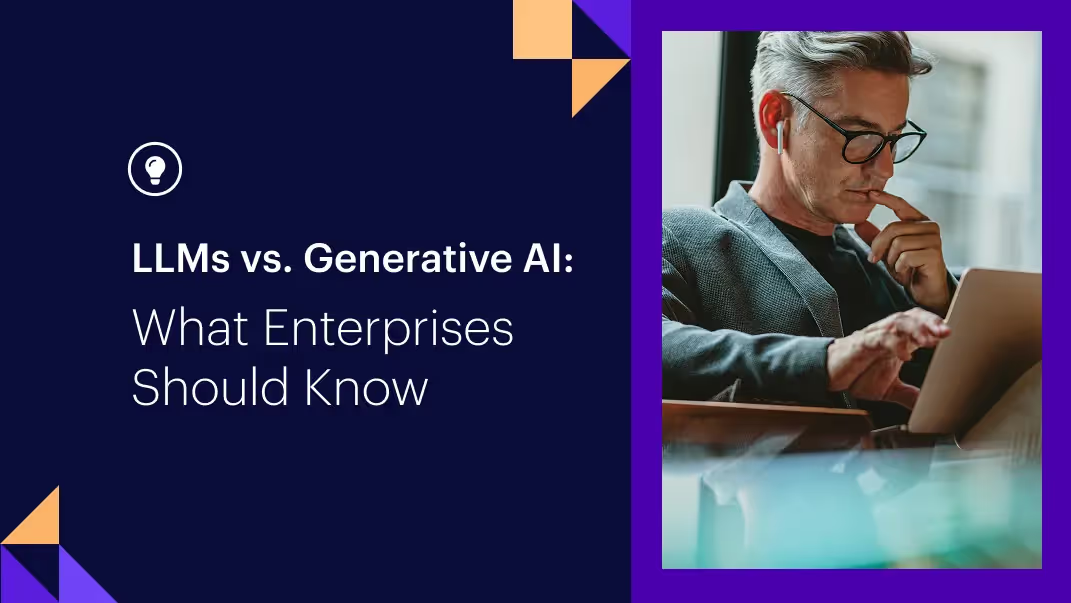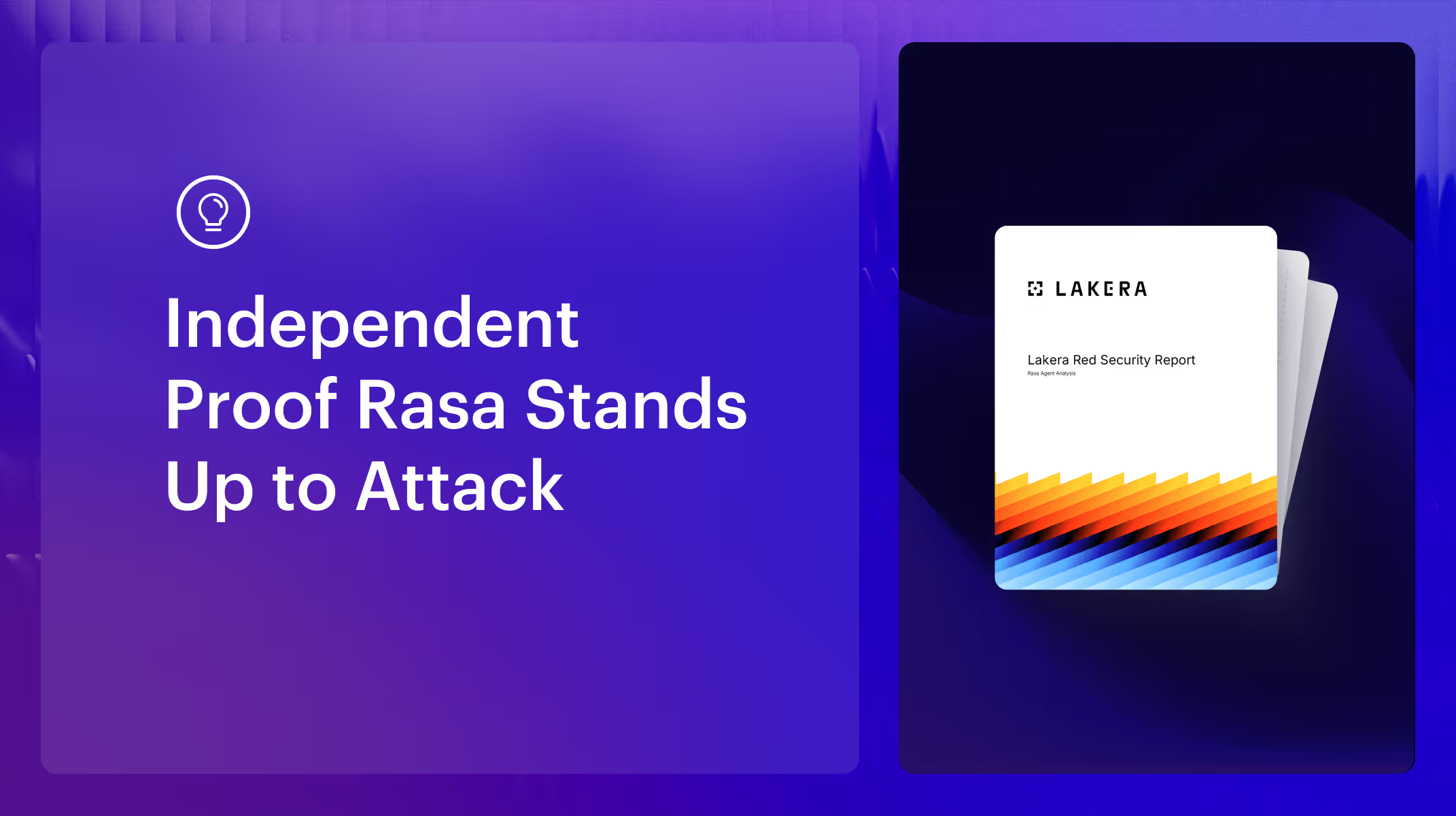_Note: Based on the podcast transcript, this post was written with Claude Opus then edited.
In a recent episode of the Vanishing Gradients podcast, Hugo Bowne-Anderson chatted with Alan Nichol, Rasa Co-Founder and CTO, to discuss the evolution of conversational AI and the impact of large language models (LLMs) on the industry. They discussed the history of chatbots, the challenges developers face, and Rasa’s innovative approach to harnessing the power of LLMs.
The Evolution of Conversational AI
Alan and Hugo began by tracing the evolution of conversational AI. Early rule-based systems like Eliza relied on pattern matching and predefined responses, which limited their ability to understand context and engage in natural conversations. Conversational AI greatly improved after adopting machine learning-based approaches like intent classification and entity extraction. These techniques allowed chatbots to better understand user queries and provide more relevant responses.
However, LLMs truly transformed conversational AI. LLMs, like GPT-3 and its successors, are trained on vast amounts of text data, allowing them to generate human-like responses and engage in contextually aware conversations. This breakthrough created new possibilities for AI assistants who can understand and respond to various user inputs.
Alan stressed how important it is for developers to really understand these changes. Knowing the strengths and weaknesses of each approach helps developers make informed decisions when building conversational AI systems.
Integrating LLMs with Business Logic
A key challenge with using LLMs is integrating them with business logic. While LLMs are great at generating fluent and coherent responses, they don’t naturally understand business-specific rules and constraints. Relying solely on LLM-generated responses can lead to inconsistencies, irrelevant information, or even wrong actions.
Rasa developed the Conversation AI with Language Models (CALM) approach to address this challenge. CALM combines the strengths of LLMs with structured business logic, allowing developers to define conversational flows and easily integrate them with LLMs.
Here's a closer look at the key components of CALM:
- Dialogue Management: CALM prioritizes the user experience using a declarative format called "flows." Flows represent the high-level structure of the conversation, specifying the steps, actions, and transitions that need to occur. This allows for the extension and modification of flows as needed, reducing development time and enhancing accuracy. For example, imagine a plate full of spaghetti. Is it easy to spot the beginning or end of a single strand of spaghetti in that jumbled mess? No. CALM, however, allows you to create linear flows with a direct beginning and end point, allowing you to see exactly where agent handoffs occur.
- Dialogue Understanding: Using LLMs to understand user intent and extract relevant input information, CALM can accurately identify the user's intentions, even if they are expressed differently or with language variations. This allows for a more nuanced detection of user needs, accommodating a wider range of expressions and reducing the reliance on rigid intent classification systems.
- Conversation Repair: CALM manages and repairs conversations in real-time, enabling users to go off-script without losing the original intent. Conversations can flow smoothly and maintain coherence across various user inputs. After solving the digression, the user is asked if they want to continue the original query.
- Proactive Engagement: With CALM, the AI assistant can anticipate user needs based on the context of previous interactions and initiate conversations without waiting for user prompts. This capability engages users at critical moments, offering assistance or information that enhances the user journey.
Alan highlighted the benefits of this approach, including improved consistency, easier maintainability, and handling complex conversational scenarios. Without the complexities of working directly with LLMs, CALM empowers developers to focus on designing effective conversational experiences.
In-Context Learning: A New Paradigm for Conversational AI Development
They explored another key topic: The concept of in-context learning and its potential to shake up conversational AI development. In-context learning allows LLMs to understand and follow instructions provided in natural language without the need for explicit fine-tuning or retraining.
Alan explained how in-context learning differs from traditional prompt engineering. Instead of crafting carefully designed prompts to elicit specific responses, developers can provide plain language instructions to guide the LLM's behavior. This approach is more intuitive and efficient, leveraging the LLM's inherent ability to understand and follow instructions.
With in-context learning, developers can:
- Specify desired behaviors: By providing clear instructions in natural language, developers can specify the desired behaviors and tasks they want the LLM to perform (i.e., generating responses, extracting information, performing actions based on user inputs, etc.).
- Provide examples: Developers can include examples within the instructions to further guide the LLM's responses. These examples serve as reference points, helping the LLM understand the desired output's expected format, tone, and content.
- Adapt to context: In-context learning allows LLMs to dynamically adapt their behavior based on the conversation's context. By considering the entire conversation history and the provided instructions, LLMs can generate more contextually relevant and coherent responses.
Alan emphasized the potential of in-context learning to simplify conversational AI development. By leveraging this approach, developers can focus on defining high-level goals and desired behaviors rather than worrying about the low-level details of prompt engineering.
Exploring the True Potential of LLMs
Alan suggested going beyond LLMs' generative capabilities and exploring their potential for instruction-following and task completion. While LLMs are often associated with generating human-like text, their ability to understand and execute complex tasks based on natural language instructions opens up many possibilities.
Alan highlighted several potential applications of instruction-following LLMs in conversational AI:
- Multi-step processes: LLMs can guide users through multi-step processes, such as booking a reservation or completing a purchase. By providing step-by-step instructions and handling user inputs at each stage, LLMs can create seamless and intuitive conversational experiences.
- Personalized recommendations: Leveraging user preferences and context, LLMs can provide personalized recommendations (i.e., suggest relevant products, services, content, etc.) to enhance the overall user experience.
- Contextual assistance: LLMs enhance user interactions by answering follow-up questions and providing additional context. By maintaining a coherent conversation and understanding the user's intent, LLMs can offer helpful information and clarifications.
- System integration: LLMs can integrate with external systems to perform user actions. By understanding natural language instructions, LLMs initiate specific actions (i.e., retrieving information from databases, sending notifications, controlling IoT devices, etc).
Alan encouraged developers to think creatively about how LLMs can be integrated into their conversational AI systems. By exploring the full potential of instruction-following and task completion, developers can build AI assistants that go beyond simple question-answering and provide valuable and actionable assistance to users.
Rasa's Vision for the Future of Conversational AI
During the discussion, it became clear that Rasa is deeply committed to empowering developers and advancing conversational AI. Alan spoke about Rasa’s vision for the future, saying how crucial the developer community is in shaping the industry’s direction.
Rasa's CALM approach makes LLMs more accessible and manageable. AI assistants built with CALM are contextually aware and aligned with organizational goals by providing a structured framework for integrating LLMs with business logic.
However, Alan said CALM is just the beginning. Rasa envisions a future where developers can seamlessly integrate LLMs into their conversational AI projects, leveraging the power of in-context learning and instruction-following to create more natural, adaptive, and effective AI assistants.
Rasa actively invests in research and development, collaborates with the developer community, and provides educational resources to help developers stay at the leading edge of conversational AI. Per Alan, knowledge sharing, experimentation, and collaboration drive innovation and push the boundaries of what's possible with LLMs.
Conclusion
Alan and Hugo’s conversation offered a fascinating glimpse into the world of conversational AI and the transformative impact of LLMs. From the early days of rule-based systems to the current state-of-the-art LLMs, conversational AI's journey is marked by constant evolution and innovation.
Developers must learn from these experiences and embrace the opportunities presented by LLMs. By leveraging tools like CALM and the power of in-context learning, you can build AI assistants that are more natural, contextually aware, and capable of performing complex tasks.
We look forward to seeing the incredible innovations developers will create by embracing this challenge, learning from the past, and exploring the possibilities of conversational AI. Want to try out CALM for free? Download the Rasa Pro Developer Edition today and let us know what you think in the Community Forum.





